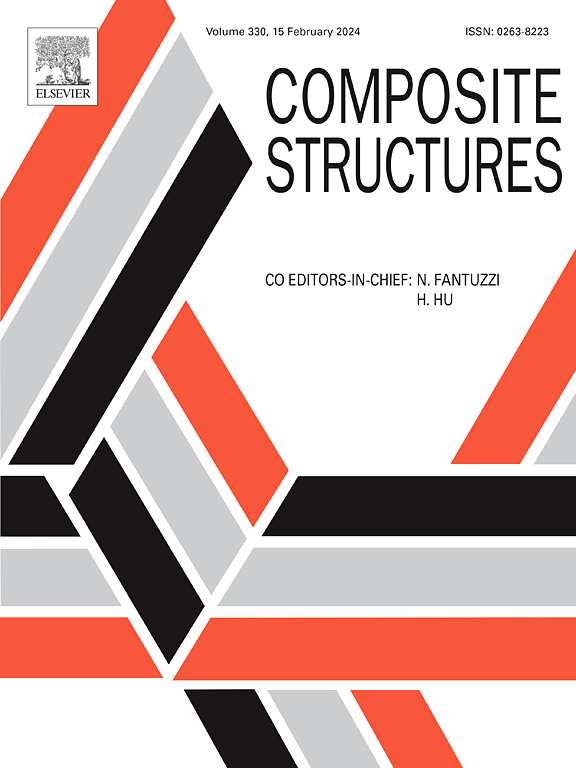钢筋混凝土结构黏结滑移模拟中三维钢筋-混凝土界面单元的有效数值实现策略
IF 6.3
2区 材料科学
Q1 MATERIALS SCIENCE, COMPOSITES
引用次数: 0
摘要
合理表征钢筋混凝土界面粘结滑移行为对评价钢筋混凝土结构力学性能具有重要意义。本研究提出了一种使用用户定义单元(UEL)子程序的新型三维界面单元,在实际捕获不同加载场景下的非线性界面响应方面取得了进展。关键的创新在于开发了一个高效的Python脚本,用于在ABAQUS中插入接口元素,解决元素部署中的计算挑战。阐述了控制轴向、径向和耦合轴-径向相互作用的本构律,以提高粘-滑模拟的保真度。基于UEL子程序的界面单元数值实现,对单元刚度矩阵、坐标变换矩阵和残差矩阵进行了严格的定义,保证了计算性能的鲁棒性。在材料和部件水平上对独立实验结果进行了广泛的验证,证明了界面元素在预测破坏模式、损伤演变和力学响应方面的准确性。该方法为将粘结滑移行为整合到RC结构的非线性分析中提供了一种实用的策略,为推进结构工程模拟提供了可靠的解决方案。本文章由计算机程序翻译,如有差异,请以英文原文为准。
An efficient strategy for numerical implementation of 3D rebar-concrete interface element for integrating bond-slip behavior in RC structures simulation
Rational characterization of bond-slip behavior at the rebar-concrete interface constitutes a critical impact in evaluating the mechanical performance of reinforced concrete (RC) structures. This study presents a novel three-dimensional interface element using a user-defined element (UEL) subroutine, offering an advancement in realistically capturing nonlinear interfacial responses under diverse loading scenarios. A key innovation lies in the development of an efficient Python script for the insertion of interface elements within ABAQUS, addressing computational challenges in element deployment. The constitutive laws governing axial, radial, and coupled axial-radial interactions are elaborated to enhance the fidelity of bond-slip simulations. The numerical implementation of the interface element, based on the UEL subroutine, involves rigorous definitions of the element stiffness matrix, coordinate transformation matrix, and residual matrix, ensuring robust computational performance. Extensive validation against independent experimental results at both material and component levels demonstrates the accuracy of the interface element in predicting failure modes, damage evolution, and mechanical responses. The proposed approach represents a practical strategy for integrating bond-slip behavior into the nonlinear analysis of RC structures, offering a reliable solution for advancing structural engineering simulations.
求助全文
通过发布文献求助,成功后即可免费获取论文全文。
去求助
来源期刊

Composite Structures
工程技术-材料科学:复合
CiteScore
12.00
自引率
12.70%
发文量
1246
审稿时长
78 days
期刊介绍:
The past few decades have seen outstanding advances in the use of composite materials in structural applications. There can be little doubt that, within engineering circles, composites have revolutionised traditional design concepts and made possible an unparalleled range of new and exciting possibilities as viable materials for construction. Composite Structures, an International Journal, disseminates knowledge between users, manufacturers, designers and researchers involved in structures or structural components manufactured using composite materials.
The journal publishes papers which contribute to knowledge in the use of composite materials in engineering structures. Papers deal with design, research and development studies, experimental investigations, theoretical analysis and fabrication techniques relevant to the application of composites in load-bearing components for assemblies, ranging from individual components such as plates and shells to complete composite structures.
 求助内容:
求助内容: 应助结果提醒方式:
应助结果提醒方式:


